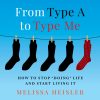Start From a Place of Peace
I have been writing a lot lately about compassion and understanding, as I think that is what is sorely needed in the United States and the world at large these days. My readers seem to be having difficulty with the message. They are angry. They are scared. They find it impossible to understand and accept the other. But this is exactly what we need to do.
In February, I wrote about the importance of channeling anger into compassion and understanding, not more anger. Recently I ran across an article focused on peaceful activism which professes the same message. Thich Nhat Hanh, well-known Buddhist spiritual teacher and Zen master, agrees that “meeting anger with more anger only makes matters worse.”

Thich Nhat Hanh teaches about Engaged Buddhism which uses mindfulness to help people find “peace in themselves so that their actions come from a place of compassion.” Before we can instruct, educate and move others toward enlightenment, we first need to be in a place of peace. We need to be aware of our emotions and thoughts. We need to be in control of our actions. We need to love and accept our selves. Then we have the calm power to reach others.
In graduate school, I participated in a March at University of California, Los Angeles (UCLA). Although I agreed with the cause, I found the shouting and other displays of anger anti-productive. The crowd was acting like a three-year who didn’t want to go to bed. We whined and complained. Like-minded people agreed with us, were triggered, and took on our anger. And those who opposed our beliefs, were more resistant. We made it easy for those who disagreed with us to fight us. It was not a discussion or an education. It was an attack. And when you attack, it provokes others to attack back.
Part of the march went past the hospital on the campus grounds. As part of our march permit and out of respect, as we passed by the hospital everyone was quiet. I found this to be the most powerful part of the march. Thousands of people walking in unison exuding a quiet power. We weren’t victims. We weren’t attacking others. We were marching together in strength. It was that moment that the march was most powerful.
Here are a few ideas to help you find your peace, turn your anger to compassion, and start helping to heal our community.
Count to ten before reacting. Remember that old rule? When we are triggered, we tend to have an immediate gut level reaction – which is usually negative and counterproductive. Take a moment to release your anger before speaking or taking action. This will ensure you are consciously choosing the most positive and helpful reaction.
Take a few moments and explore your own thoughts and beliefs. If you are angry at racists, are you treating them with the same blind hate with which they are treating others? If you disagree with consumerist ideas which are not taking into consideration the needs of the people, where in your life are you putting your own need above others? If you are flabbergasted by how someone can completely disregard reality and hold fast to their own truth, where in your life are you stubbornly holding on to what you believe in lieu of facts? Work through your own fears, lies, and assumptions, before you try to reach out to others.
Stop retelling the story. Rehashing what has happened and how wrong it was, simply burns grooves of anger, fear and hate into your brain. Instead, once you have understood what has happened, release it, and then find ways you can act, in a peaceful manner, to right the wrongs.
This is not an easy time for so many, but like all growth, the most painful and difficult times are the ones that bring us to the next level. Join me in seeing this as an opportunity for us to rise out of the ignorance of the past and create a new more peaceful world.





